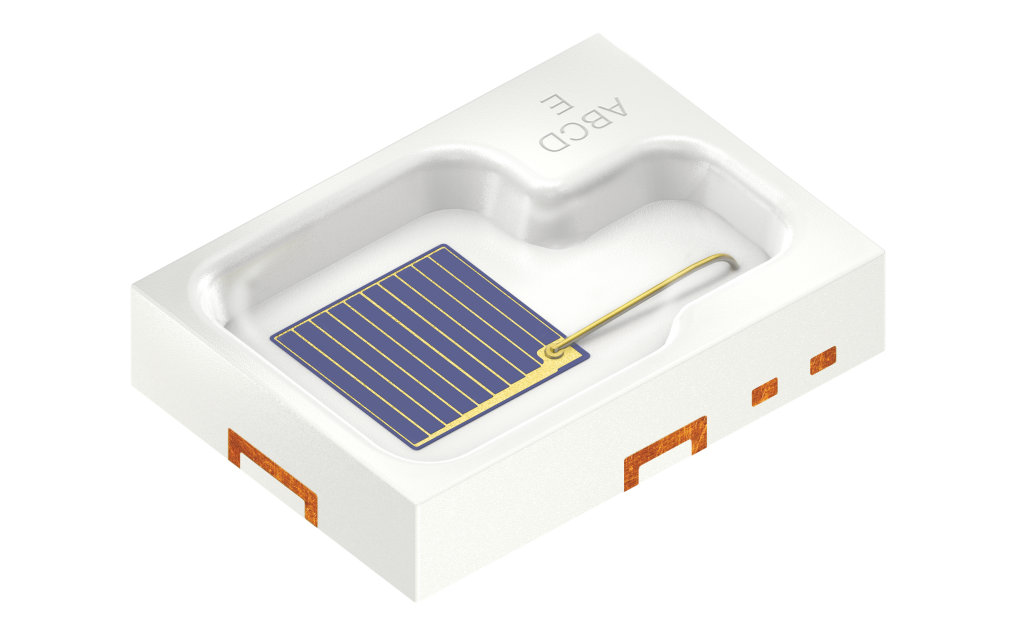Osram Opto Semiconductors has introduced a new extremely compact high-power Synios IRED for automotive applications. The new infrared LED from Osram Opto Semiconductors can reduce the size of lighting units of camera-based assistance systems in cars. The company says that compared to the Platinum Dragon that it previously introduced, the Synios SFH 4770S A01 can deliver up to 25 percent higher optical output and its footprint is reportedly one-tenth the size.

New Osram Opto IRED Synios SFH 4770S A01
Only last year, Osram presented the company’s first Synios infrared LED (IRED) for the consumer market, the SFH 4770S. Now, the new component is suitable for use in vehicles. The company says that the primary applications for this IRED with a wavelength of 850 nanometers (nm) include infrared lighting units for camera systems that monitor the environment outside of the car. These applications include systems such as night vision assistants and forward collision detection with pedestrian protection solutions that take input from camera images.
The infrared LED floods the scene in front of the vehicle with infrared light to enable reliable detected even in the dark or in poor weather conditions. Unlike laser-based assistance systems, which operate with pulsed light, the above-mentioned systems tend to use permanent light sources.
The new Synios SFH 4770S A01 can replace the established Dragon family in these applications. Such automotive detection applications require high optical output in continuous operation (DC).
Comparison to Platinum Dragon
The new IRED provides an optical output of about 1140 milliwatts from a current of 1 A, making it about 25 % brighter than the Platinum Dragon SFH 4235 for example. Typically the SFH 4770S A01 can emit 1700 mW at 1.5 A. The Plantinum Dragon IRED delivers 950mW at 1 A.
“SFH 4770S A01 currently offers the best efficiency and the best ratio between component size and optical output on the market for the automotive sector,” said Dr. Walter Rothmund, Head of Marketing Infrared Automotive at Osram Opto Semiconductors.
Like its predecessor, the SFH 4770S A01 contains an extremely efficient chip that employs nanostack technology featuring two light-emitting p-n junctions. The device’s typical forward voltage is 3.2 V.
Like the Dragon LED SFH 4235, the Synios is also a Lambertian radiator, making it ideal for reflector-based systems. The Synios package measures just 2.75 x 2.0 x 0.6 mm, requiring about one-tenth of the space of the Dragon IRED.
The device’s unchanged thermal conductivity and its thermal resistance of a mere 6 kelvin per watt (K/W) allow much smaller systems with the same thermal management.
Furthermore, thanks to higher optical output, achieving the same brightness levels requires fewer components, which translates to even lower system costs.
The robust IRED, like the Platinum Dragon can operate in a temperature range of -40 to 125 degrees Celcius.
“With the new Synios we have managed to create a small and compact product for the automotive sector which we intend to expand into a family of products,” said Rothmund. Additional wavelengths are planned, for example.




